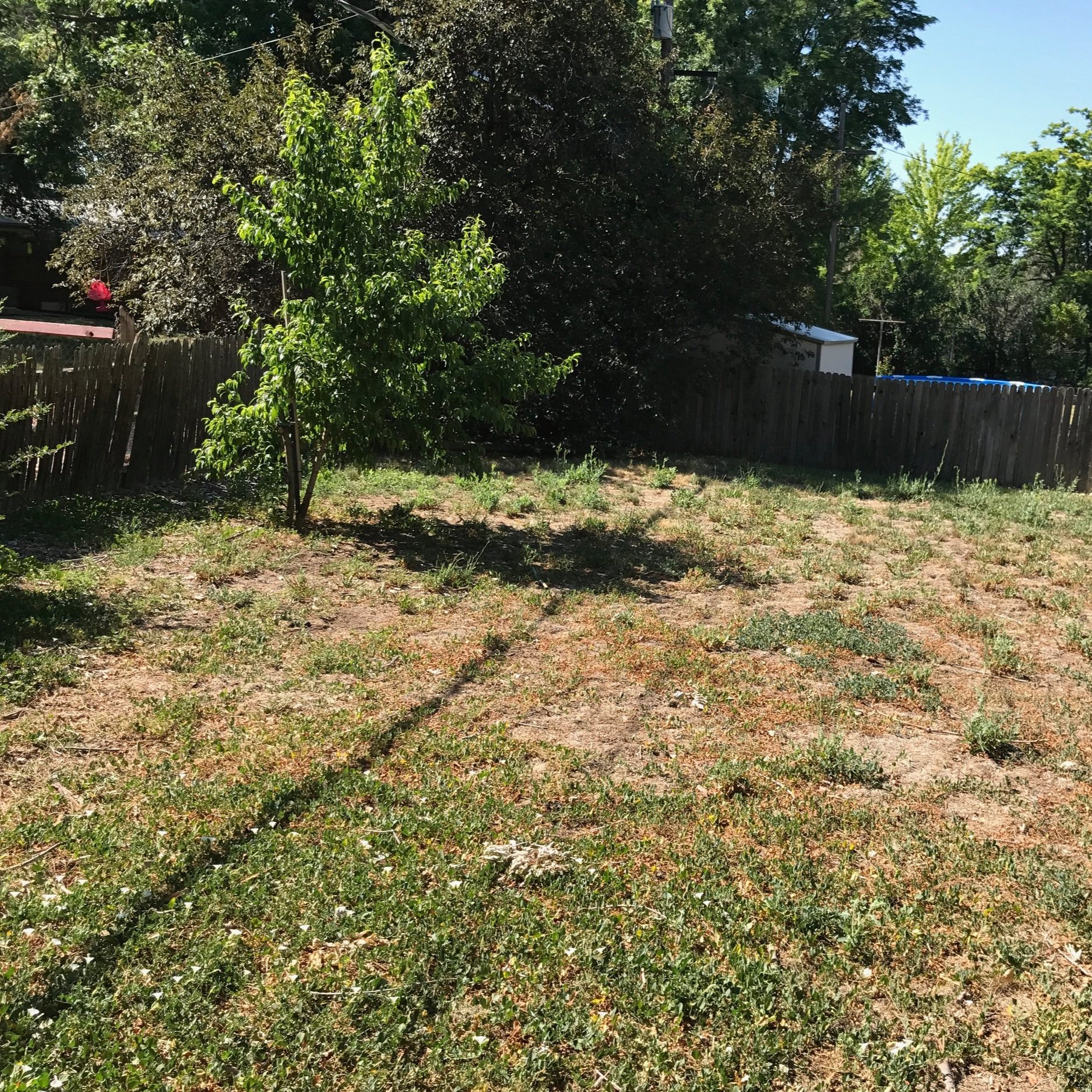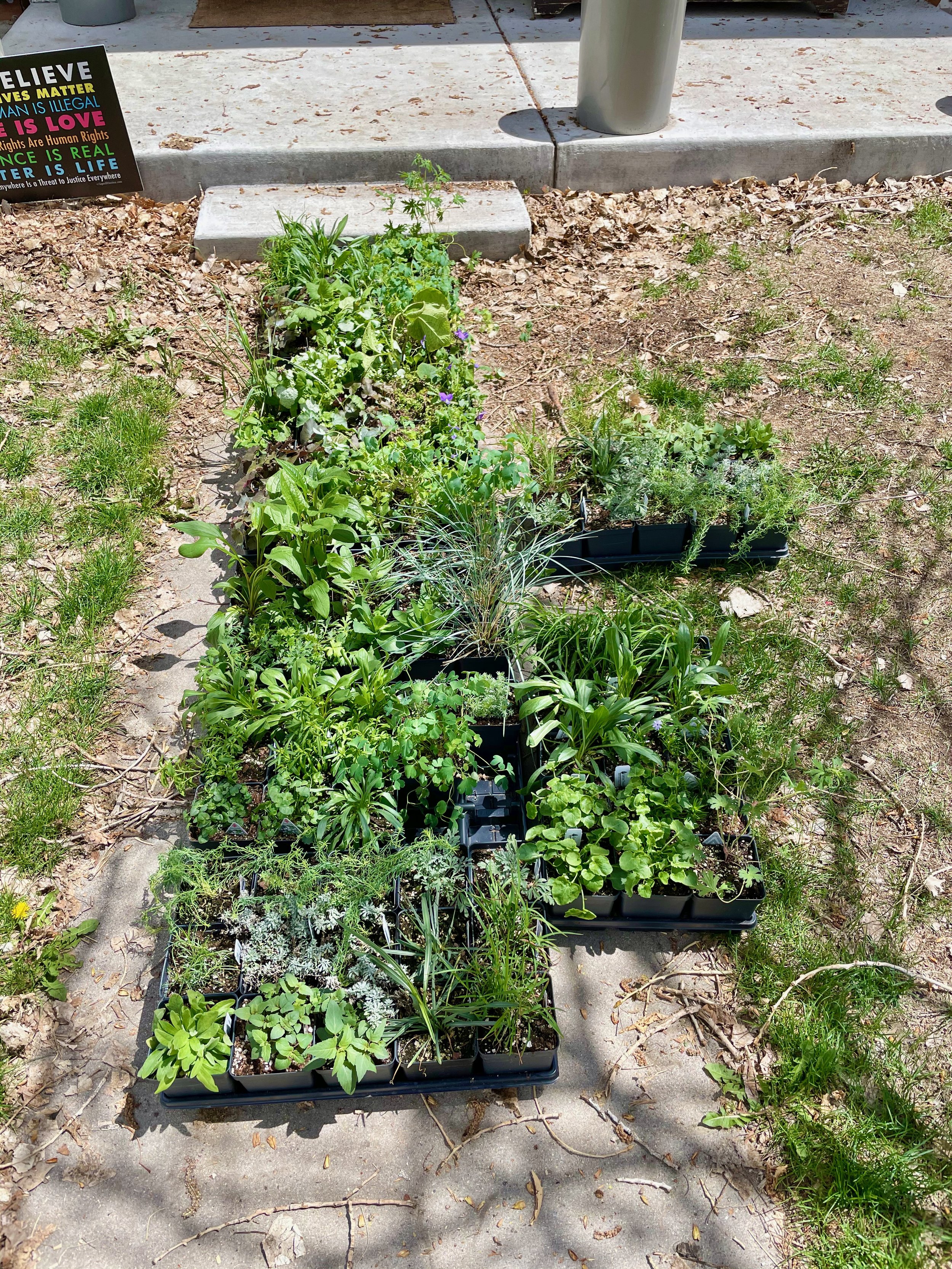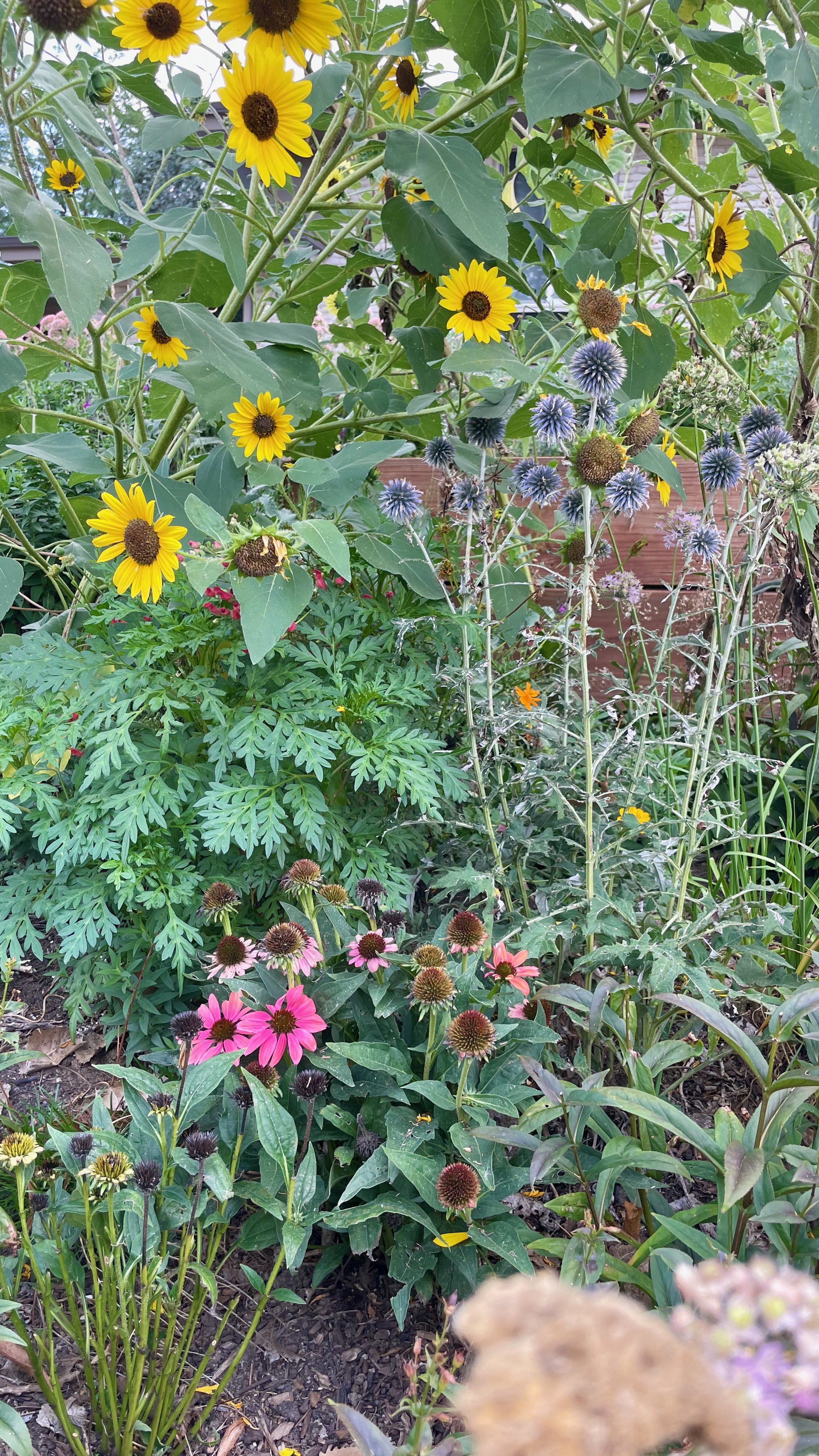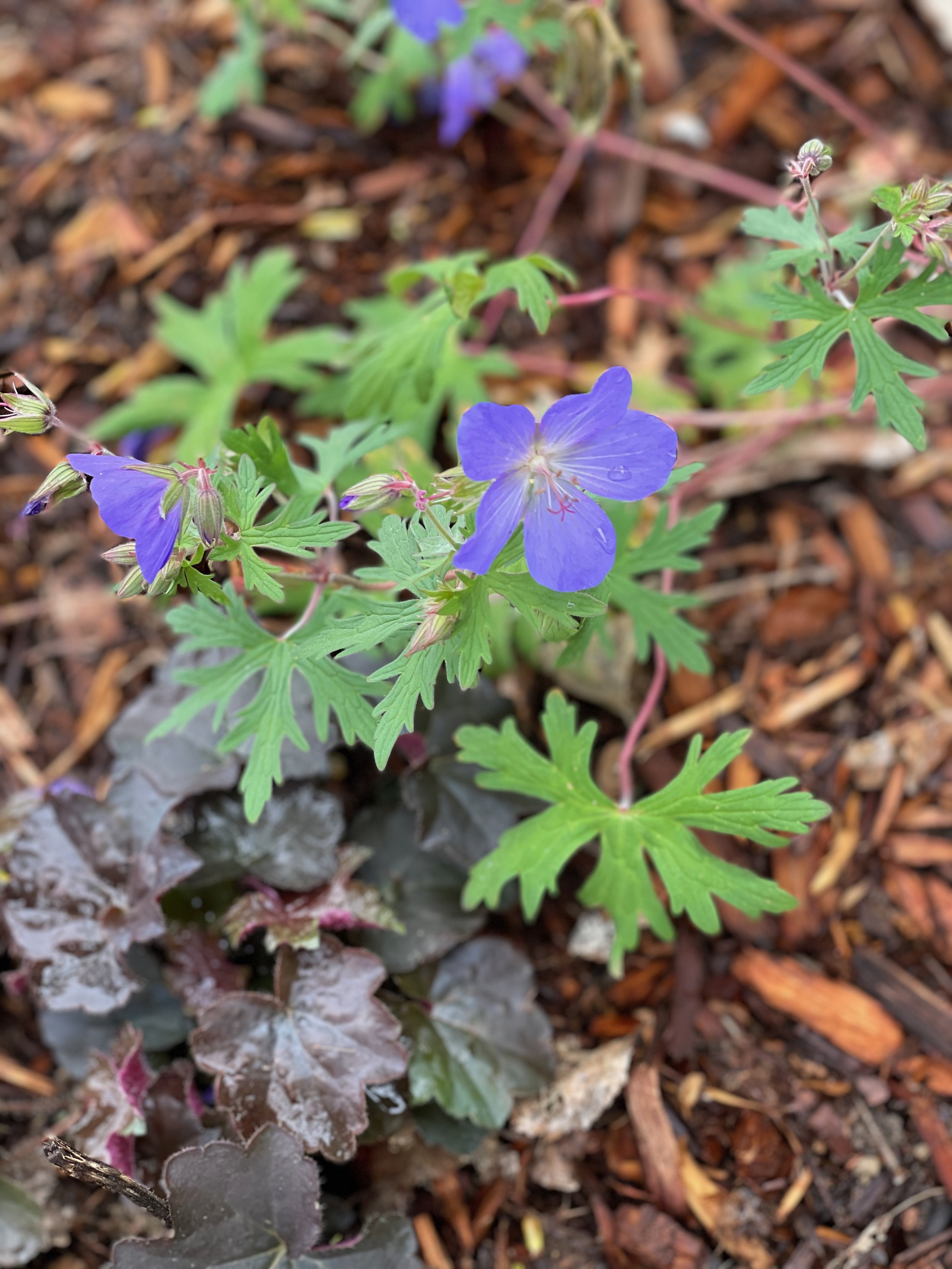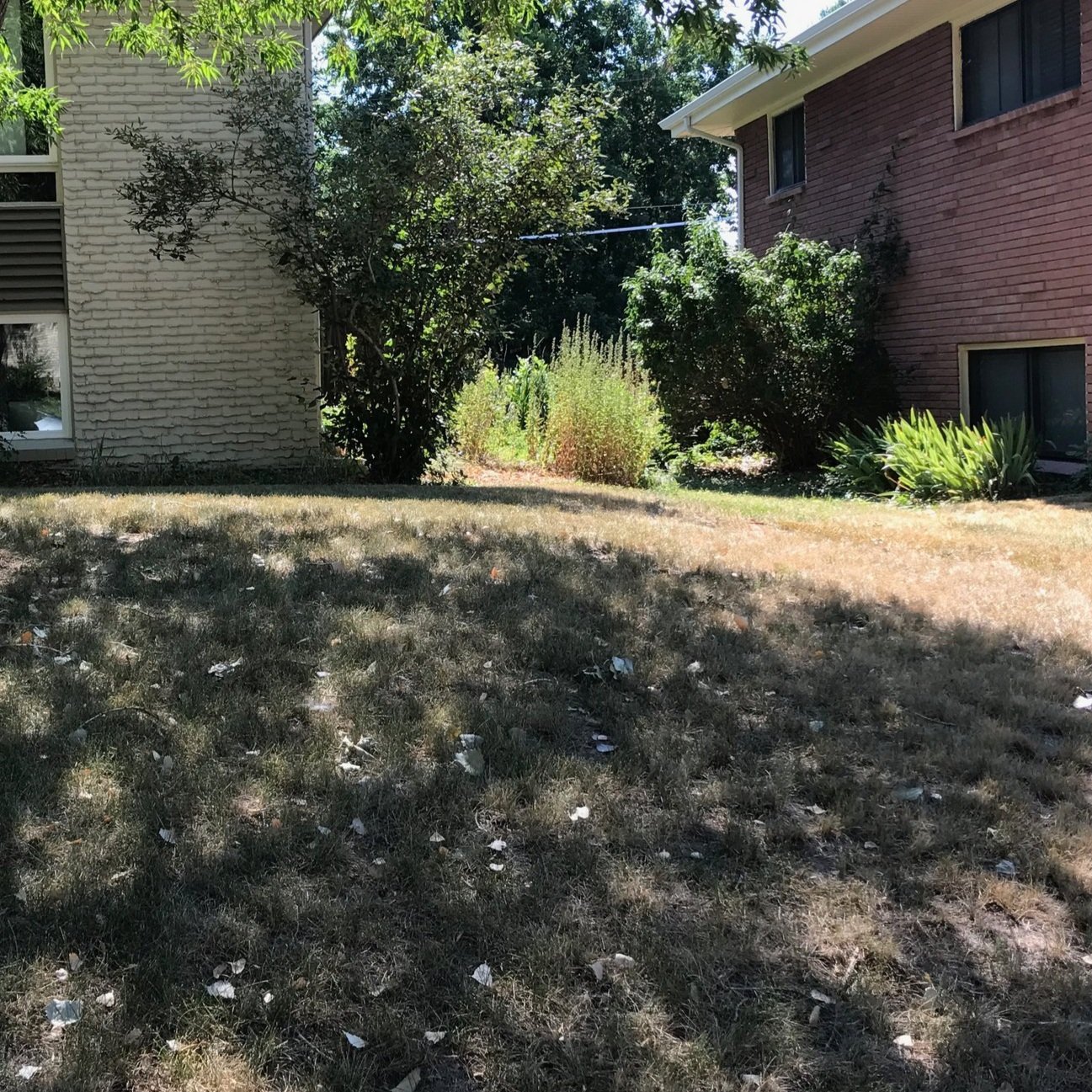Soil Testing
When Should You Do A Soil Test
and What Will You Learn?
When we first bought our home, I had a soil test done to see if the soil was part of the problem. What once had been lawn many years ago, I guess, had been overrun with invasive weeds. And water seemed to just disappear – the soil never seemed to be hydrated in many parts of our yard which was a bit of a mystery.
Our soil test, however, answered lots of questions – and raised a few more, too.
What Is a Soil Test and Why Should You Get One?
A soil test is a simple process where a sample – or several samples – of your soil are analyzed in a laboratory to assess its nutrient levels, pH, and texture. This test can reveal critical information about the health of your soil and help you understand how to improve it for the best plant growth.
Do you need one? Maybe! But it can't hurt, honestly. I recommend getting a soil test when you move to a new home or if you are having a new approach in gardening – or a new problem that is hard to solve (like a sick tree, or an area that is hard to cultivate).
Getting a soil test done at your local County Extension office is one of the easiest and most affordable ways to get accurate and professional results. County Extension offices, often affiliated with universities and agricultural departments, provide soil testing services to help gardeners, farmers, and homeowners improve their soil quality. You'll also find your local Master Gardeners, like me, through your County Extension office who are there to answer any gardening questions you might have.
A soil test provides a tailored analysis based on your specific soil conditions. Without a soil test, gardeners often rely on guesswork when it comes to fertilization and soil amendments. With the right soil test results, you can make informed decisions that promote healthier plants, higher yields, and more successful gardening experiences.
Different labs will have slightly different testing procedures, but every test will come with instructions. The test I did required samples from 4 different parts of our yard. I chose areas where we had distinct problems – lots of weeds and no growth, soil that seemed to shed water, a bare area where even weeds wouldn't grow. I wanted to know why those areas were so different from most of the yard.
But to get a real baseline of your own property, choose areas where you plan to grow. If you don't plan to garden there, don't test that soil first. You want to take samples from areas where you plan to garden first.
What Will a Soil Test Show?
A soil test performed at your local County Extension office will give you an in-depth analysis of several key factors that affect soil quality. Soil tests may give you more information than you need. Just keep that in mind! Home gardeners don’t necessarily need to worry, for example, about micronutrients. If you are practicing good gardening, it’s unlikely you’ll need to address micronutrients. These tests are also for farmers who may need to adjust their practices on a much larger scale.
Here’s what the test might reveal:
Soil Texture and Organic Matter | almost all soil tests
Soil texture refers to the proportion of sand, silt, and clay in your soil, which impacts its drainage, aeration, and nutrient-holding capacity. If your soil test reveals that your soil is too heavy with clay or overly sandy, it might be necessary to amend it with organic matter (like compost) to improve its structure.
Soil pH Level | almost all soil tests
The pH level of your soil determines its acidity or alkalinity. Most plants grow best in soil with a pH between 6.0 and 7.0, which is slightly acidic to neutral. If your soil is too acidic (low pH) or too alkaline (high pH), it can interfere with plant nutrient absorption, leading to poor plant health. A soil test will show your soil's exact pH, and the Extension office may provide recommendations on how to adjust it.
Low pH (Acidic Soil): If the pH is too low, it can lead to nutrient deficiencies, such as calcium and magnesium. You may need to add lime to raise the pH.
High pH (Alkaline Soil): If the pH is too high, nutrients like iron, manganese, and phosphorus may become unavailable to plants. You may need to add sulfur to lower the pH.
Macronutrient Levels (NPK) | some soil tests
Your soil test will show the levels of the three primary nutrients that plants need to grow: nitrogen (N), phosphorus (P), and potassium (K). These macronutrients are essential for plant development, but they should be balanced to avoid deficiencies or toxicities. Here’s what each one does:
Nitrogen (N): Essential for healthy foliage and overall plant growth.
Phosphorus (P): Promotes root development, flowering, and fruiting.
Potassium (K): Improves disease resistance and helps with plant water retention.
A soil test will show whether your soil has adequate levels of these nutrients and how you can amend it if necessary.
Micronutrient Levels | some soil tests
In addition to macronutrients, plants also require smaller amounts of micronutrients, including calcium, magnesium, sulfur, iron, zinc, copper, and others. A soil test will highlight any deficiencies or excesses in these micronutrients. For example, a deficiency in calcium can lead to blossom end rot in tomatoes, while insufficient iron can cause yellowing leaves.
Aside from your county extension office, you can also buy simplified kits are garden centers and places like Lowe’s. In general, these kits test for fewer issues, but they are GREAT if you are solving problems in lawns or raised garden beds. They can give you results that will indicate low or high nitrogen levels, for example, that could negatively impact grass or plant growth. They are also usually quite economical, and the results might be quicker than those from your extension office.
The kits are simple to use. But the results will be for four samples mixed together. So if you want samples from several parts of your property, you’ll need to run multiple kits. Otherwise your results won’t be location-specific. For example, if you have questions about the soil under a tree, a grassy area in your front yard, and your raised vegetable garden, you’ll need to run 3 different tests. Otherwise the soils will be mixed together, and your results won’t be meaningful.
Other Soil Tests
What a Soil Test will NOT Tell You
Soil tests can't tell you WHY you get the results that you get – and the why is almost as important as the results themselves. To get to the whys, you may need to do a little sleuthing – especially if your property is new to you.
I started by talking with my neighbors. I asked about how the homeowners before us had gardened and treated the yard. And I learned a LOT in the process. My results showed very low levels of organic matter in our soil. And in talking to my neighbors, I learned that what had been lawn had not been cared for in more than 15 years. It wasn't watered.
Questions to ask your neighbors:
Who took care of this yard? Was it the homeowner? Did they have a service?
How often was it watered?
Did they ever have chemicals or fertilizers added by an outside company?
Were there any trees here that have been removed?
Were there any play structures or other larger structures that have been removed?
If your property isn't new to you, but you are shifting how you care for it, answer those questions for yourself, too.
Here's what I learned in those conversations:
Our yard hadn't been cared for in about 15 years.
We don't have a sprinkler system, and it was not watered.
There had been a LARGE sandy area in the backyard under a swing set. It took up about a quarter of the yard. At some point soil was dumped over the sand.
At some point the previous homeowners had used a yard fertilizer service, but they had stopped long ago.
Coupled with our soil test, all of that explained so much!
The Benefits of Getting a Soil Test
Having a soil test done at your local County Extension office provides a variety of benefits that can directly impact your gardening success. Here’s why you should consider it:
Tailored Fertilization Recommendations
One of the greatest advantages of a soil test is the specific, actionable recommendations it provides. Rather than applying general fertilizer or amendments, a soil test will show you precisely what your soil needs – which often is very little. This ensures that you’re applying the right nutrients in the correct amounts, saving money and preventing over-fertilization.
One of the biggest problems with using fertilizers is that when they are over-applied or applied incorrectly, the nutrients end up in waterways and runoff instead of benefitting plants as needed. Knowing exactly what your plants need can prevent this harmful waste.
Enhanced Plant Growth and Health
By knowing your soil’s nutrient composition, you can make informed decisions to improve plant health. If your soil has a nutrient imbalance, the test results will provide guidance on how to amend the soil for optimal plant growth. By adding the right nutrients, you can encourage robust root systems, healthier foliage, and better fruit or flower production.
Improved Soil Structure
Soil tests can identify problems related to soil texture and organic matter content. If your soil is compacted, poorly drained, or lacks organic matter, the Extension office can recommend ways to improve it. For example, adding compost or organic mulch can help improve soil structure, which in turn supports better root development and plant vitality.
Prevention of Nutrient Deficiencies or Toxicities
A soil test not only identifies deficiencies but can also highlight excessive levels of certain nutrients, which can be just as harmful to plants. For example, too much nitrogen can result in excessive leafy growth with no flowers or fruit. Identifying these imbalances early can prevent long-term damage to your plants and garden.
Cost Savings
Without knowing your soil’s specific nutrient needs, you might waste money buying fertilizers that aren’t necessary. A soil test helps you avoid this unnecessary expense by giving you the exact information you need to make smart, cost-effective decisions.
How A Soil Test Changed My Garden
Between the soil test and the conversations I had with our neighbors, here's what I learned:
Part of our yard had very sandy soil.
Most of the property has heavy, clay soil.
Each sample had extremely low organic matter.
The pH varied widely from sample to sample.
Our yard hadn't been cared for in about 15 years.
We don't have a sprinkler system, and it was not watered.
There had been a LARGE sandy area in the backyard under a swing set. It took up about a quarter of the yard. At some point soil was dumped over the sand.
At some point the previous homeowners had used a yard fertilizer service, but they had stopped long ago.
Here's how I made changes:
Build Raised Beds: maybe the most significant decision I made, however, was to install lots of raised beds. Learning that our soil had been so badly abused for so long, I decided that raised bed gardening — with open bottoms — was the most logical solution for growing anything other than native plants. The raised beds give me more control over the soil conditions for my vegetables and other plants — plus, they give the space definition and look good, too!
Plan for Success: The area where the sand had been buried under a few inches of soil – that's where nothing grows and where the soil always felt dry. I dug down and found about 18" of sand under about 4" of crumbling top soil. The sand was draining away any moisture in the topsoil which kept anything other than Bindweed from growing – in nearly a quarter of our yard. As we considered what to do, we decided that rather than try to fix the soil in that area which was going to take a lot of resources and excavation, we would just use that space in another way. So that's where we built the Greenhouse and the Stage.
Add Compost: The front yard was very low in organic matter because that soil was churned up and turned over when the street was put in. It's not topsoil at all. So that's where I designed and planted the Wildlife Garden – filled with drought-tolerant plants that don't mind heavy clay. But before I planted those plants, I added about 4" of high-quality compost made from food waste. That compost acted both as a weed barrier and added organic matter to the soil and some nutrition as well. Most clay soils don't need that treatment, but because mine had been used and abused, it did.
Water Trees: We started watering our trees very well year-round knowing that not only are they fighting the dryness of Colorado, but they are also growing in suboptimal soil for any tree.
Drought-Tolerant Grasses: I chose grasses that are extremely drought-tolerant and will thrive in clay soils.
How to Get a Soil Test at Your Local County Extension Office
Getting a soil test at your local County Extension office is a straightforward process, and the cost is often minimal. Here’s how you can go about it:
1. Contact Your Local Extension Office
Visit your County Extension office’s website or give them a call to inquire about their soil testing services. Some offices may mail out sample kits, while others may provide a drop-off service for soil samples.
2. Collect Your Soil Sample
Follow the guidelines provided by the Extension office on how to collect a proper soil sample. Generally, you will need to:
Collect soil from several spots in your garden or yard to get a representative sample.
Use a clean trowel or spade to take samples from about 4-6 inches deep.
Mix the samples in a clean container and allow the soil to dry before submitting it to the Extension office.
3. Submit Your Sample and Payment
Once your sample is ready, submit it to the Extension office along with the required payment. Some offices may offer additional services like pH testing for free, while others might charge a small fee for a complete soil analysis.
4. Receive Your Results
Within a few weeks, you’ll receive your soil test results, which will include a comprehensive report detailing nutrient levels, pH, and recommendations for soil amendments.
What to Do with Your Soil Test Results
Once you receive your soil test results, you may be wondering what to do with the information. Here’s how to make the most of your soil analysis:
Read the Report
Soil test reports typically include the following information:
pH Level: Whether your soil is too acidic or alkaline.
Macronutrient Levels (NPK): The levels of nitrogen, phosphorus, and potassium in your soil.
Micronutrient Levels: The availability of essential trace elements like iron, zinc, and calcium.
Soil Texture: Whether your soil is sandy, loamy, or clay-based.
Recommendations: Specific amendments or fertilizers needed to correct any deficiencies or imbalances.
If you are unsure about what the results mean, contact your local Master Gardeners. They can help you interpret the results and the recommendations, too.
Follow the Recommendations
The report will offer specific recommendations for improving your soil. For example, if your pH is too low, the Extension office may recommend adding lime to raise it. If nitrogen is deficient, they may suggest adding organic compost or a nitrogen-rich fertilizer.
Amend Your Soil if Needed
Based on the test results, apply the recommended soil amendments, such as compost, lime, sulfur, or fertilizers. It’s important to follow the recommended amounts to avoid over-application, which can harm plants and the environment.
Monitor Your Plants
After amending your soil, monitor your plants’ growth to ensure they are thriving. If you notice any problems, consider testing your soil again or making adjustments to your care routine.
I am so glad we got a soil test. The results have shaped how I garden from the start at this house, and the results show the impact that having good, science-backed knowledge has on growing!
Whether you're a new gardener or an experienced one, soil testing ensures that you make the right decisions about fertilization, amendments, and plant care. By knowing exactly what your soil needs, you can achieve healthier plants, higher yields, and a more productive garden. Visit your local County Extension office today to start testing your soil for success.








